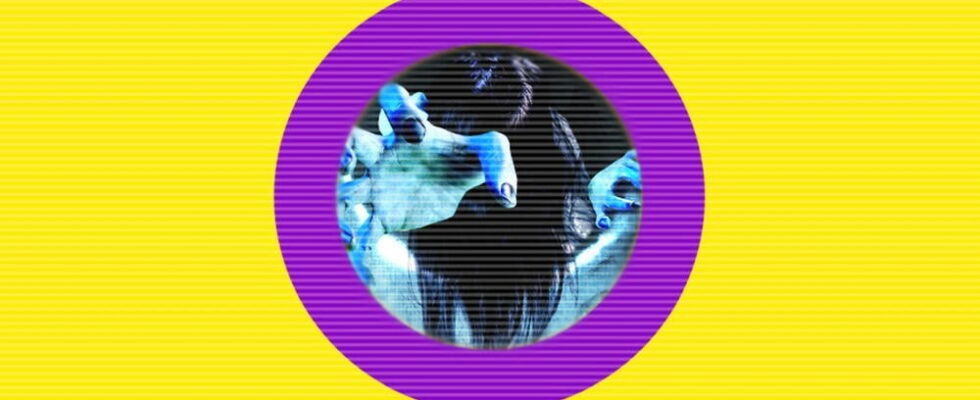That for queer The Q in LGBTQ often has to do a lot in the absence of other letters and stands for lesbians, gays, bisexuals and trans people for all other expressions of queerness. This also applies to the Community of intersex peoplewhich, at 1.7 to 1.9 percent of the population (according to the Anti-Discrimination Agency), are about the same as the number of redheads.
In films and series inter* characters – i.e. characters whose biological sex characteristics are not clearly male or female – are almost non-existent. In addition to a few protagonists from films about the topic itself, such as XXY by Lucía Puenzo or Both by Lisset Barcellos, a famous horror film character serve as a rare representative.
Intersexuality in fiction: Except for horror creatures, little has been done
The fact that the Intersex Pride flag consists of a purple ring on a yellow background is strangely fitting, because perhaps the most famous intersex film character is Sadako Yamamura from the J-Horror franchise ringExactly: the scary girl from the well who curses people with her horror video and occasionally crawls out of the TV. However, most versions, including the US remake The Ring, omit this detail about her character. Sadako’s intersexuality plays an important role in the original story.
Ascot Elite
Sadako Yamamura in the ring
In Koji Suzuki’s novel, Sadako is a young woman who visits her father in a tuberculosis clinic. There she experiences sexual violence at the hands of one of the doctors, who notices her abnormal body and throws her into the well. Infected with smallpox, Sadako then combines the virus with her nensha ability to capture mental images on film and sends her cursed video out into the world.
This kills the viewer after seven days unless they copy the tape and show it to another person, creating an eternal, virulent cycle. In the follow-up novel Spiral, Sadako’s true intention is revealed: Those who are currently ovulating are fertilized by the supernatural curse virus with a clone of Sadako, allowing her to be reborn.
Mentioned
Sadako’s inter* identity in 14 films and 2 series on the topic of Ring in only a few versionsFor example, in the TV film Ring: Kanzenban, which adapted the novel very closely to the original before the famous J-horror classic Ring, as well as in the South Korean remake The Ring Virus, which combines elements of both versions.
OtheRing: How problematic is Sadako, the vengeful spirit, as an intersex horror icon?
The fact that a scary movie monster is the most prominent fictional inter* character can safely be considered problematic But equating queerness or any other deviation from the norm with monstrosity is nothing new in the horror genre and has a sad tradition.
Depending on the version, Sadako will at least portrayed as a tragic figurewhose understandable thirst for revenge only develops after she is treated with tremendous injustice because of her difference. However, her mother is said to have given birth to her after an affair with a water demon, which is why her intersexuality is presented as an expression of an inherent monstrosity. This goes beyond classical otheringthat is, the exclusion and marginalization of those who are different from “good” normal people. The intersex person is literally demonized.
Furthermore, in the second novel, which was filmed before Ring 2 with the original sequel Ring – Spiral, Suzuki reproduces the myth of the self-fertilizing “hermaphrodite” as a medical curiosity, which in this case even threatens the world.
Ascot Elite
Sadako in Ring 0
The intersex aspect is particularly regrettable in the prequel film Ring 0, which shows Sadako (Yukie Nakama) in the most sympathetic light by far. They missed the opportunity to present more than her potentially disturbing abilities as a reason for discrimination. So it remains an X-Men-like Metaphor for queerness and a Sadako who could immediately (and rightly!) be recruited by Magneto.
Orchid characters: only a few examples of intersex in film and television
The non-profit organization GLAAD (Gay & Lesbian Alliance Against Defamation) publishes an annual report on the situation of LGBTQ characters on US television. Intersex characters are not even listed as a separate group, as there are vanishingly few of them, even compared to trans characters.
Much more often than recurring characters, such as Amy (Jessica Campbell) from Totally Wrong, Totally Wrong, individual episodes of medical series such as House, Nip/Tuck or Masters of Sex are devoted to the topic – with varying levels of sensitivity. That can be done better.
Film and series characters with non-binary gender identity are now more visible, where the focus is on social gender (gender) in contrast to biological sex (sex), which are not mutually dependent. Let us hope that the curse of poor to non-existent representation of intersex characters will be broken in the near future and that their stories will not remain untold. Even if that probably takes longer than seven days.
*. If you make a purchase via this link, we receive a commission.
